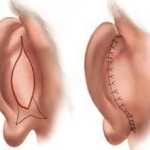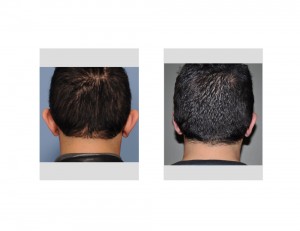Correction of prominent ears is an aesthetic surgery that has been done for over a hundred years. The anatomy of an otoplasty is relatively simple as there is just skin and cartilage associated with much of the ear. A wide variety of cartilage changing techniques have been used in otoplasty and they all can have similar success if technically well performed. But the one constant in aesthetic ear reshaping surgery has been the excision of skin on the back of the ear.

In the February issue of the Journal of Plastic Reconstructive and Aesthetic Surgery, an article was published entitled ‘Otoplasty: The Case for Skin Incision by Higher Volume Operators’. In this clinical study, the association between skin excision on the back of the ear and recurrence of ear prominence in otoplasty surgery was evaluated in about 120 otoplasties performed over a two year period at one hospital. Recurrence of prominence at the first follow-up appointment (mean follow-up 3.4 months) was 10.2%. Plastic surgeons who performed low numbers of otoplasties had significantly higher recurrence rates than high volume surgeons. There was no statistically significant association between skin excision and recurrence of prominence. Thus the authors do not advocate any skin excision on the back of the ear during otoplasty surgery.

Besides its negligible benefit to maintaining the new ear shape, keeping as much skin as possible on the back of the ear has numerous benefits. Adequate skin cover over the placed cartilage sutures can help prevent the risk of long-term knot visibility and/or extrusion/exposure. It can also help prevent a feeling of tightness on the back of the ear. Lastly should ever a revision for overcorrection be needed, having a normal amount of skin can be helpful in its release.
Dr. Barry Eppley
Indianapolis, Indiana


